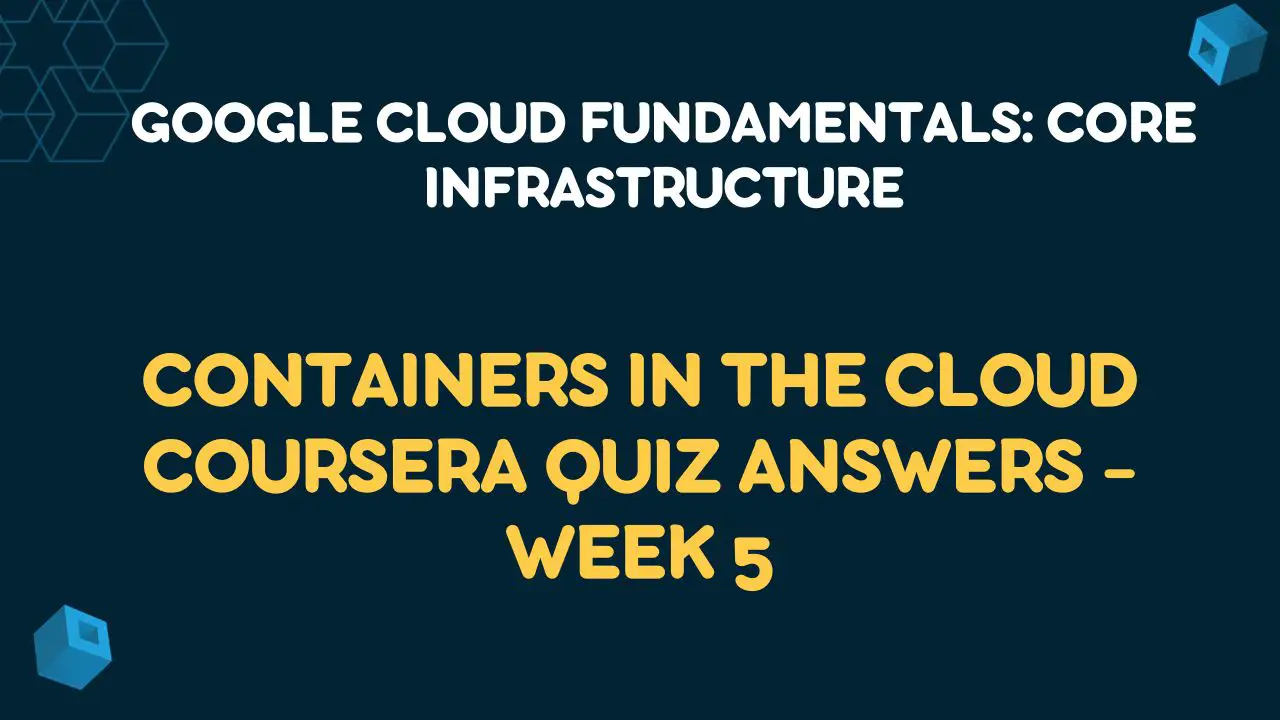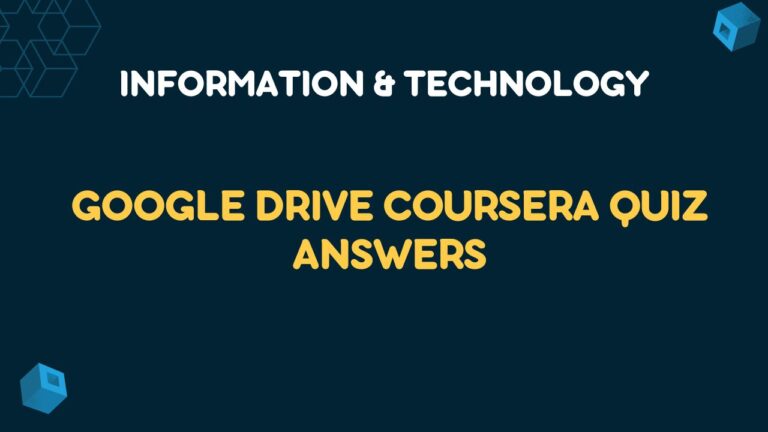Book Appointment Now

Containers in the Cloud Coursera Quiz Answers – Week 5
All Weeks Google Cloud Platform Fundamentals: Core Infrastructure Quiz Answers
Table of Contents
Containers
Q1. True or false: each container has its own instance of an operating system.
- True
- False
Q2. Containers are loosely coupled to their environments. What does that mean? Choose all the statements that are true. (3 correct answers)
- Deploying a containerized application consumes less resources and is less error-prone than deploying an application in virtual machines.
- Containers are easy to move around.
- Containers package your application into equally sized components.
- Containers don’t require any particular runtime binary.
- Containers abstract away unimportant details of their environments.
Kubernetes
Q1. What is a Kubernetes Pod?
- A group of nodes
- A group of clusters
- A group of containers
Q2. What is a Kubernetes cluster?
- A group of machines where Kubernetes can schedule workloads
- A group of containers that provide high availability for applications
Kubernetes Engine
Q1. Where do the resources used to build Kubernetes Engine clusters come from?
- Bare-metal servers
- Compute Engine
- App Engine
Q2. True or false: Google keeps Kubernetes Engine refreshed with successive versions of Kubernetes
- True
- False
Containers, Kubernetes, and Kubernetes Engine
Q1. Identify two reasons for deploying applications using containers. (Choose 2 responses.)
- Consistency across development, testing, production environments
- No need to allocate resources in which to run containers
- Tight coupling between applications and operating systems
- Simpler to migrate workloads
Q2. True or False: Kubernetes allows you to manage container clusters in multiple cloud providers.
- True
- False
Q3. True or False: Google Cloud Platform provides a secure, high-speed container image storage service for use with Kubernetes Engine.
- True
- False
Q4) In Kubernetes, what does “pod” refer to?
- A group of containers that work together
- A popular management subsystem
- A group of clusters that work together
- A popular logging subsystem
Q5) Does Google Cloud Platform offer its own tool for building containers (other than the ordinary docker command)?
- Yes; the GCP-provided tool is an option, but customers may choose not use it.
- No; all customers use the ordinary docker command.
- Yes. Kubernetes Engine customers must use the GCP-provided tool.
Q6) Where do your Kubernetes Engine workloads run?
- In clusters implemented using App Engine
- In clusters built from Compute Engine virtual machines
- In clusters that are built into GCP, not separately manageable
- In clusters implemented using Cloud Functions
Next Module Quiz Answer >>
<< Previous Module Quiz Answer
All Google Cloud Platform Fundamentals: Core Infrastructure Quiz Answers
Week 01: Introducing Google Cloud Platform
Week 02: Getting Started with Google Cloud Platform
Week 03: Virtual Machines in the Cloud
Week 05: Containers in the Cloud
Week 06: Applications in the Cloud
Week 07: Developing and Monitoring in the Cloud
Week 08: Big Data and Machine Learning


